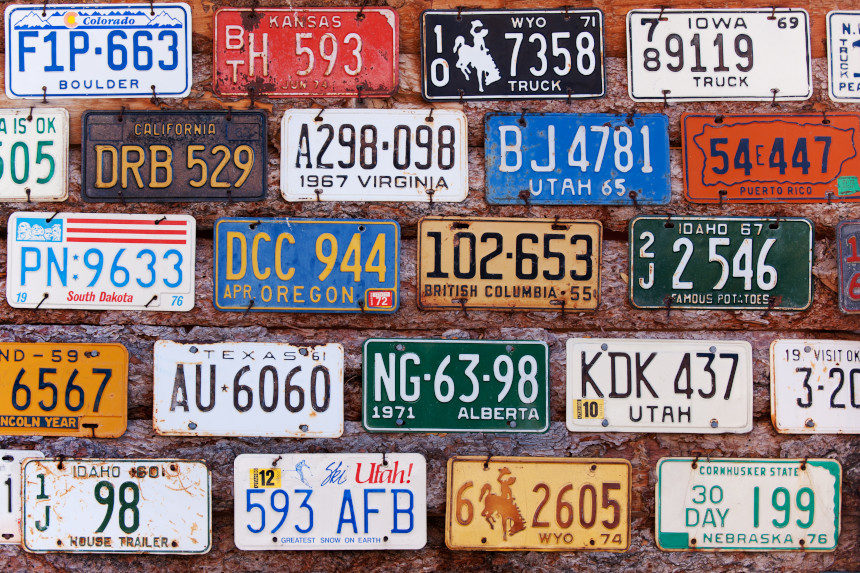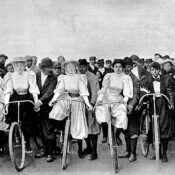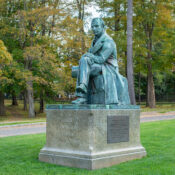Some idea of the tremendous loss of life experienced in this country as a result of motor accidents, many of them due to reckless driving or to lack of the common decencies of the road, may be obtained from a striking statement made by Magistrate Frederick B. House, of the New York Traffic Court, to The Times of that city:
Here in this city we kill an average of three persons a day. During the eighteen months our men were on the fighting front, when 48,000 men were killed in battle, or died of wounds received in action, 91,000 people, of whom 25,000 were children, were killed on the public highways of this country. … In this court alone — to show the need for more competent and careful drivers of automobiles here — we tried over 40,000 cases of traffic regulation breaches last year, and at the present pace the figure will reach 50,000 this year.
In New York City, as elsewhere, the number of fatal motor accidents has long shown a steady and alarming increase. According to Census Bureau figures, the number of such fatalities in the United States during 1919 was 3808. Of this number 780 occurred in New York City alone. This was an increase of 89 over the previous year, and was more than double the number recorded in 1915.
If Magistrate House’s estimate is correct, and there is no reason to suppose it is not, the death toll for the current year in his city will amount to very nearly 1100 persons. Assuming that this number bears the same ratio to the national total in 1921 that the New York figure bore to the total in 1919, application of the rule of three indicates a nationwide roll of about 5370 fatalities.
Comparison of the number of accidents at home with those in foreign cities is not particularly instructive unless it is possible to take into account the respective numbers of motors operated as well as the populations of the cities compared. And yet the statistics of traffic fatalities in Paris during 1920, which have just been made public, are not without interest. It appears that only 120 persons were killed outright during the year; and of these only 73 met death in motor accidents, 47 fatalities having been due to street cars and other vehicles. One is inclined to speculate as to whether this comparatively low death rate is due to greater care and skill on the part of French drivers or whether the Gallic custom of prosecuting persons who commit the misdemeanor of allowing themselves to be run over has not taught Parisians an agility of movement that New Yorkers have not yet learned.
State and local authorities are not blind to the evil of reckless driving, even though the progress they have made in checking it is not encouraging. Some of the obvious remedies are not within their grasp. Students of the problem are generally agreed that applicants for drivers’ licenses should be required to pass a thorough road test in the presence of duly qualified inspectors. This is a step in the right direction, but in many states the number of inspectors would have to be increased tenfold in order to provide a force that could do the work in any but the most perfunctory manner. New York, for example, has only six, an absurdly small number in comparison with the task that confronts them.
Other deterrents proposed are more stringent laws and more rigorous enforcement of those already upon the statute books. The courts have been reluctant to impose prison sentences except in the most flagrant cases; but there appears to be a general disposition to hold careless or intoxicated drivers more and more strictly to account. Owners as well as drivers will probably feel the pressure of this tendency. Only a few weeks ago a Philadelphia judge was reported to have said, in effect: “Car owners should not be allowed to hire chauffeurs to do their killing for them,” which was interpreted to mean that when the owner of the car is riding in it and his driver causes loss of life, the employer must bear his proper share of the legal responsibility for the accident.
Fines, especially when heavy, have some deterrent effect upon irresponsible drivers; but unfortunately it often happens that the most flagrant offenders are those who are least inconvenienced by a penalty that may be paid on the spot merely by handing over a check to the clerk of the court. There is urgent need for some entirely new and adequate form of punishment for such delinquents, and it is to the interest of every community to find it, even though the task may involve some experimentation.
Nearly a year ago an ingenious and interesting proposal was made by Mr. F.A. Skelton, of New York, in the columns of The Tribune of that city. Mr. Skelton’s suggestion, with some abridgment and certain modifications, is here presented:
An act of legislature would authorize and require boards or commissions issuing licenses to furnish license tags of various distinctive forms and colors. There would be a stock pattern and color for the use of law-abiding motorists, and contrastingly different designs to be displayed by persons convicted of violation of the traffic laws. Without rescinding existing penalties for misdemeanors of the road, the act would empower the courts to compel convicted car owners to turn in their ordinary tags and to display in their stead, during the period designated by the court, one of the special penal tags which by its form and color would advertise the fact that the driver of the car had been convicted of speeding, criminal carelessness or driving while intoxicated.
Such a label would inform every traffic officer and every chauffeur on the road of the nature of the driver’s offense. It would tag him as a dangerous man. The police would watch him as a suspicious character, and other drivers would watch him for their own safety. His smallest transgressions would bring down upon him the wrath of the road as long as he sported the penal tag. And yet, if the humiliation proved intolerable, the motorist would always have the option of leaving his car in the garage while the ban of the court was upon it.
The essential excellence of such a system would lie in its equity. It would bear alike upon rich and poor, high and low. It would give car owners a new incentive to engage careful drivers instead of throwing upon insurance companies the whole financial consequence of mishaps. It would chasten alike the jaunty lad at the wheel of the grocer’s delivery wagon, the heedless truck driver, the nighthawk taxi man, the speedy young clubman with a hard lump on his hip, the imported chauffeur and the petticoated young daredevil who burns the roads in a high-powered car..
—“Tag the Reckless Motorist,” Editorial, September 3, 1921
This article is featured in the September/October 2021 issue of The Saturday Evening Post. Subscribe to the magazine for more art, inspiring stories, fiction, humor, and features from our archives.
Featured image: Natalia Bratslavsky / Shutterstock.com
Become a Saturday Evening Post member and enjoy unlimited access. Subscribe now




Comments
A most clever idea by the Post editors of 1921 in identifying undesirable dangerous drivers with an automotive ‘Scarlet Letter’ of sorts. This is especially true for those who feel they’re “entitled” to take the right-of-way away from other drivers when it’s not their turn, causing accidents and road rage. A tempting thought to implement now.